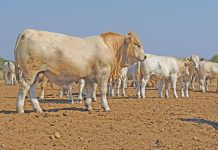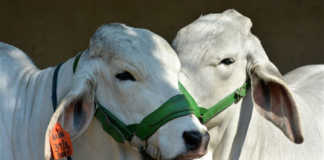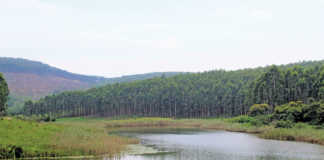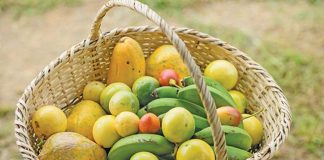
Photo: Zunel van Eeden
It is no secret that maize is one of the most important crops worldwide, and at the rate at which maize plantings increase with each new season, it will probably overtake wheat plantings by 2030.
This is largely due to meet the increasing demand for human consumption, livestock and industrial use.
READ Understanding the value of maize
White maize is primarily grown for human consumption by smallholders and commercial producers, and yellow maize is planted by commercial producers for industrial use and animal feed.
South Africa is the biggest maize producer in Africa. However, the 2022/23 harvest season was challenged by numerous factors, and producers in co-operation with agricultural businesses had to adopt a defensive mode to reach noteworthy yields.
Climate impact
Excessive climate anomalies (heatwaves, drought, excessive precipitation, and hail) places South Africa’s national food security and economic growth in jeopardy because of the significance of maize production for both local consumption and exports to other African countries.
One of the biggest obstacles to maize production in South Africa is drought, especially in semi-arid and drought-prone areas like the Western and Eastern Cape.
Extended dry spells have a negative effect on maize yields because the crop needs enough moisture to grow to maturity.

Lower yields and lower-quality grain are the outcome of stunted growth, decreased tassel and cob production, and poor grain development caused by drought stress.
Reduced kernel set, poor grain fill, and pollen sterility can all result from heat stress during the flowering and grain-filling stages, which further lowers maize yields.
The necessity for mitigation and adaptation techniques at the farm level to boost the resilience of maize to curb losses during future droughts is crucial, and this is emphasised by the combination of rising temperatures and frequent drought events.
It is therefore critical for producers to prepare for the worst case, and their irrigation design should be of a nature that ensures crops receive the correct amount of water at the right time of the crop’s growth stage.
Irrigation
Fortunately, producers of today can rely on Agrico, who has advanced technology and information at their fingertips to customise irrigation systems to meet the producer’s preferences.
Johan Myburgh, technical manager at Agrico, pointed out a few advantages of their irrigation systems.
Firstly, their staff are experts who work with the producer to understand his/her needs and circumstances in order to design a system that is managed easily.
Further, Agrico’s products are designed and produced locally or sourced from reliable international suppliers who understand South Africa’s production conditions.
Lastly, producers have quick access to their irrigation systems, and via the Agrico Web Control system they can manage and monitor their systems using a smart phone.
In a time where every hour of irrigation is critically important, it can have a huge impact on a producer’s harvest when they don’t have to drive to every pump and hub to control water flow.
READ The main types of irrigation
With 40 branches across Southern Africa, Agrico is never too far to service and support their clients.
The South African harvest of the past season was affected by excessive precipitation and destructive hailstorms, such as those that struck Wakkerstroom and surrounding areas in Mpumalanga.
Maize that sustains hail damage shows signs of physical harm such as bruising, stem breaking, and leaf shredding, all of which lowers yield.
Hailstorms can further impair the quantity and quality of maize produced by interfering with the planting and harvesting schedule.
After hail damage, farmers frequently face financial hardships as a result of crop losses and higher production expenses related to replanting and crop protection measures.
Pests and diseases
The yield of the past season was affected by many pests. However, maize stalk borer (Busseola fusca), fall armyworm (Spodoptera frugiperda) and the common cutworm (Agrotis segetum), three of the most economically important pests in South Africa with a high pest status, caused significant damage.
The management of these pests during the past season was challenging due to various factors.
Busseola fusca
The pest density is dependent on the level of altitude. Field reports showed that greater infestations were experienced at higher altitudes than low-lying areas. Damage varies according to the growth stage of maize and the pest density.
When B. fusca moves down into the whorl and bore into maize ears, it can influence cob development and even lead to weak seed fill.
When larvae bore into stalks at late maize growth close to harvest, stalk breakage can occur during strong winds.
It is critical to apply early control when shot hole damage is noticed during scouting, since yield is not affected by leaf damage. An alternative, environmentally friendly approach is a push-pull system that makes use of trap cropping and can easily be implemented in small-scale farming systems.
Fall armyworm
This sporadic pest made its debut in 2017 and has since badly affected maize harvests. The pest status of fall armyworm on maize in South Africa differs between the Lowveld and Highveld, and other areas such as the Eastern and Western Cape, where sporadic infestations are experienced later in the cropping season.

Field observations have indicated that permanent populations are present in the Lowveld, northern parts of Limpopo, as well as the coastal areas of KwaZulu-Natal and the Eastern Cape.
Infestations in other areas may be a result of migrating moths that occur sporadically.
Ineffective control has been experienced, since the initial cryptic feeding behaviour of larvae inside plant whorls are not easily detected.
Infestations are therefore observed too late, when plants already exhibit advanced levels of leaf damage caused by larger larvae, which are more difficult to control chemically.
Maize producers in these regions need to stay alert throughout the cropping season and regularly monitor their maize fields for the presence of this pest.
Cutworm
Although chemical control is the most common method to overcome cutworm, the past planting season showed that the effectiveness of insecticide applications varied.
Speculation regarding insect resistance to insecticides have been a topic of discussion among producers, agents and cutworm experts, but no claims can be made since it has not yet been confirmed by the Insecticide Resistance Action Committee.
READ The basics of cutworm management
The observed control failures can most likely be ascribed to other factors in-field. Field reports showed that more cutworm complaints were received from no-till fields.
More producers have shifted to no-till fields due to the soil health benefits and plant growth, however, it has implications when trying to manage cutworm.
One of the main practices of no-till fields is to leave crop residues and sow directly into residues of the previous crop, also known as ‘direct seeding’.
This practice increases the survival of larvae, because crop residues provide shelter from extreme weather conditions and natural enemies.
Weeds are also a readily available food source in no-till fields. On the other hand, conventional fields are also impacted by cutworm infestations.
Cultivation practices play an important role in the management of cutworm as the life cycle of the pest is disturbed when fields are cultivated.
The timing, however, is critical. It is suggested that fields should be left bare for a minimum of 35 days after winter cultivation.

This leaves cutworms with no food source, shelter or oviposition site, and they will be unable to complete their life cycle.
Planting should take place after the 35 days; planting too close to cultivation/weed management will leave seedlings susceptible to cutworm damage.
Leaf diseases and ear rot
Danie Leeuwner, product portfolio manager at Limagrain South Africa, highlighted that leaf and ear rot diseases were also a challenge.
The prevalent leaf diseases are grey leaf spot, caused by Cercospora zeae-maydis, and northern corn leaf blight, caused by Exserohilum turcicum.
For both the diseases, the Limagrain South Africa maize portfolio has products with good tolerance to deal with them.
The dominant ear rot is Diplodia ear rot, caused by Stenocarpella maydis. Diplodia ear rot produces specific mycotoxins that affect grazing animals differently by causing diplodiosis, which is a nervous system disorder of cattle and sheep resulting from the ingestion of mouldy cobs infeced by S. maydis.
For the reduction of risk of Diplodia ear rot, Limagrain South Africa is actively breeding maize cultivars with better tolerance and resistance to this and other diseases.
Agronomical practices can be implemented to lower the risk of infection:
- Selection of maize hybrids that are tolerant or resistant to the pathogens.
- Stubble reduction or retention.
- Stress reduction.
- Crop rotation.
- Early harvesting.
Harvesting challenges/opportunities
Due to a wetter-than-normal season in most parts of the maize production region, producers achieved above-average yields on their crops, with the national average yield across both white and yellow maize reaching 6,34t/ha, according to data from the Crop Estimates Committee.
Despite numerous setbacks during the 2022/23 planting and harvest season, South Africa’s total area planted in the past season was roughly 2,6 million hectares, of which 1 521 300ha was white maize and 1 064 800ha yellow maize.
READ Factors influencing maize yield
The Free State, North West, Mpumalanga and KwaZulu-Natal accounted for 46%, 22%, 20% and 4,4% of the total national maize production in the 2022/23 season.
From the area planted, the third-largest harvest was recorded at a total of 16,4 million tons, which is 5% more than 2021/22 season.
The large harvest is primarily ascribed to large yields, as the area planted is slightly down on the 2021/22 season.
The large harvest tons implies that South Africa will have sufficient supplies to meet domestic maize needs of about 11,4 million tons and have over three million tons for export markets in the 2023/24 marketing year.
The 2023/24 harvest is expected to be even greater, as an additional 51 650ha have been planted.
Economic impact/opportunity
There is always a market for maize, both locally and abroad, which gives producers a steady place to sell their harvest.
Further, because of its adaptability, maize may be used to create a variety of income streams, including selling it as grain, making maize meal, or supplying it to processing enterprises.
Furthermore, the economic potential of maize cultivation has been boosted by technological advancements.
Precision farming methods, such as using drones and GPS-guided equipment, maximise the efficiency of the planting, irrigation, and fertilising processes, increasing yields while lowering input costs.
Genetically modified maize varieties that offer features such as insect resistance and drought tolerance, enhancing productivity and resilience in harsh environments, also play a significant role.
Although challenges persist, strategic investments in technology, research, infrastructure, and producers’ strong relationships with agricultural businesses could position South Africa’s maize production for sustained growth and competitiveness in the years ahead.
Phone Agrico on 021 950 4111 or email [email protected]. Contact Limagrain SA on 082 824 5442.











